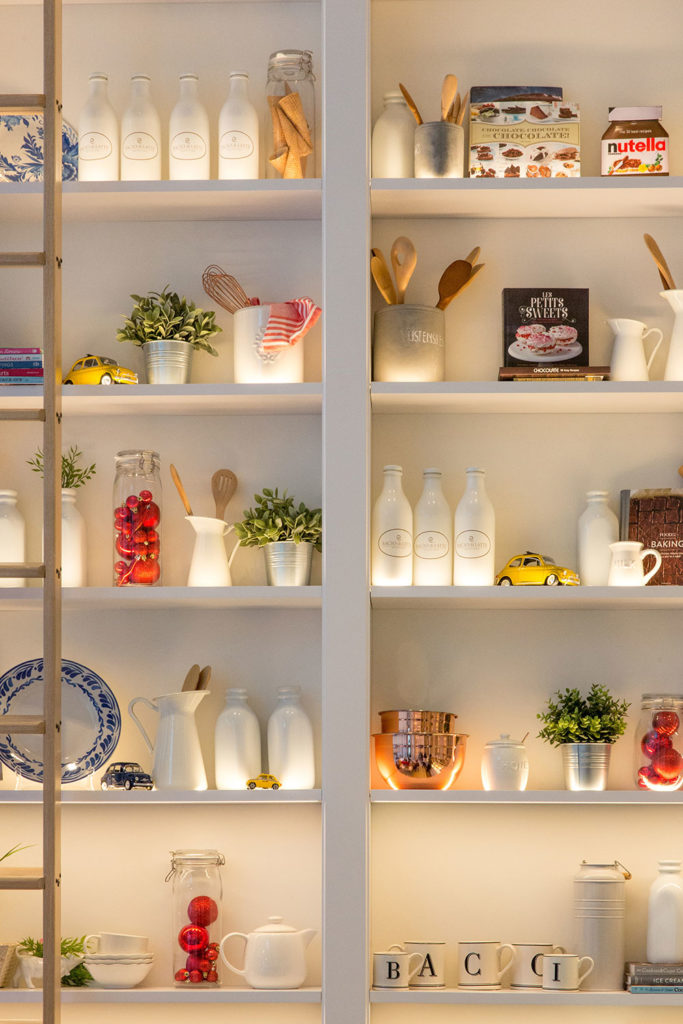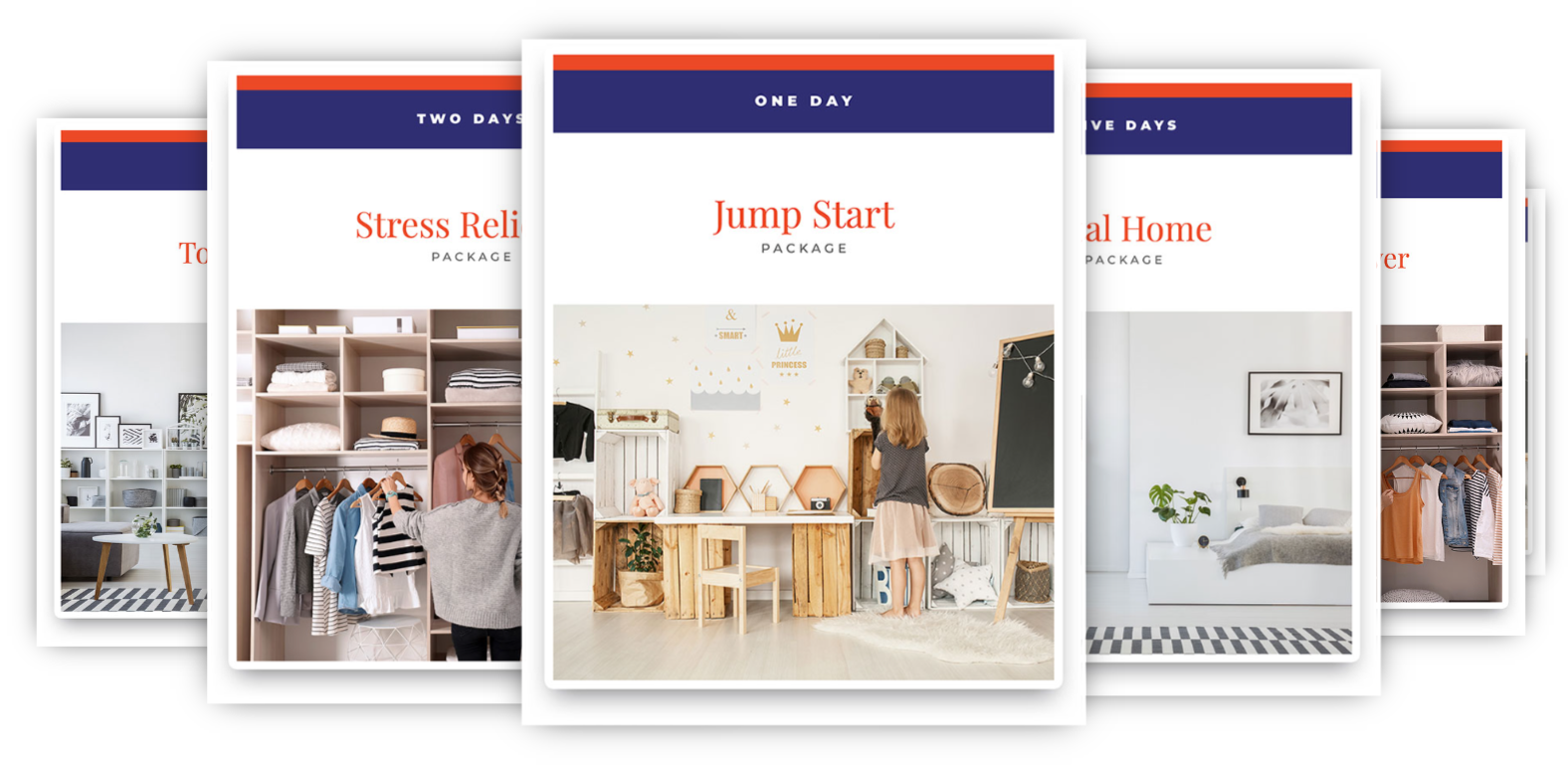Help your kitchen live up to its full potential with the right organization tricks. Our area-specific ideas will get your most essential room in the house organized—and rid yourself of “clutter anxiety” for good.
1) Sort:
Tips before you start to sort “Like with like” is the key. As you review items in your kitchen, edit out anything that is:
- broken/chipped
- outdated
- stained/torn
- duplicated too many times
- starting to take up space instead of being useful
2) Do:
Shelf lining: This will help preserve the condition of your shelves and drawers from accidental spills and rubbing from metal and/or plastic. This is especially helpful whether you’re a new home owner or renting. Assess current lining; if you’re reusing, clean and reinstall. This is a good time to switch out shelf lining if you don’t love your current product. We recommend lining under sinks throughout home as well as any high “traffic” area (e.g. mudroom cubbies, pantry shelves, laundry room detergent shelves, etc.). No liner is needed for glass shelves.
Liner Products We Love:
- TAP Plastics has store locations in the Bay Area and sells our favorite product, polypropylene (“PPP”) sheets. They are fairly clear and usually “disappear” on shelves and in drawers. These should be taped down on shelves. It’s okay to line just the two bottom shelves in upper cabinets.
- Ribbed Plast-o-Mat is sold at the Container Store and Bed Bath & Beyond. It’s easier to cut than PPP sheets, and generally less expensive. It should be taped down on shelves and drawers.
- “Easy Liner” (foam) is good for top kitchen drawers as it is non-skid especially if no inserts are being used. It’s also good in jewelry drawers in closets if no inserts are being used.
4) Containing Your Things!
Plastic Bins:
- aid in keeping similar items together (ie vitamins, cookie cutters, napkin rings, etc.)
- the lid keeps items clean and from getting misplaced
- the bins are stackable, thus gaining more space
5) Drawer Inserts:
Available in Lucite, plastic or wood (and the wood comes in different types of finishes) and they
- keep alike items together
- aid in keeping the whole drawer organized
- can be found at Bed Bath & Beyond, The Container Store, Target and online
6) Sort dishes, glassware, flatware and utensils:
- Review dish and glasses sets for frequency of use. Assess what you use for everyday and special occasions. Edit out any items with chips, cracks or partial sets.
- Sort water bottles, plastic cups and commemorative glasses (winery glasses, birthday, etc.) – discard any that have lost their appeal.
- Move everyday plates, glassware and flatware near the dishwasher for easy access to put away when cleaned.
- Group salad bowls, service plates and everyday bowls together.
- If adult beverages are a frequent libation, store cocktail and wine glassware near your everyday glassware.
- Place specialty plates, bowls and platters in low priority areas as they are used less frequently.
- Store special occasion or secondary sets of dishes (like holiday) in china storage bags in a low priority area. These rigid cases allow them to be stacked easily and safely.
- Keep placemats and cloth napkins in a drawer near the table.
7) Pantry Tips:
- Group like with like foods together for easy locating or in bins. If you have pull out pantry drawers, use spring-loaded dividers to keep items “in their own lanes”.
- Turn labels forward for easy viewing.
- Sort and discard items that:
- are opened that should have been refrigerated, are outdated, and check for bugs
- are discolored and/or have an “off” smell
- you won’t use in the future, and can therefore donate
- swelling cans that are old or have passed their SELL BY or BEST BY dates
Note: if you’re moving, try to “eat through” your pantry. There is no need to have someone pack and move your food, and your mover may refuse to move open food containers.
Grouping By Categories:
- Store grains, rice & pasta along with canned/jarred goods at mid-level as they are frequently used and need to be easy to see.
- Store your least frequently used items or back up supplies higher up.
- Group items in the same category with labels facing forward and newer dates in the back. It’s a good idea to label bins/areas with a label maker if you have one!
8) Baking Supplies:
- Use vertical “file type” storage for cutting boards, baking sheets, and even baking pans and large platters.
- Decorating Supplies: Bin them together and place on a lower priority shelf. This includes cookie cutters (if many; bin together separately), sprinkles, food coloring, rolling pin, baking/decorating spatulas, piping bags, piping tips, toppers, cupcake liners, etc.
9) Spices:
Review them to insure freshness by checking dates (spices are usually good for about one year after opening/sell by date). Discard any that are:
- expired
- do not have a strong, fresh aroma (this means it’s stale)
- have a “dull” appearance/lack of color/faded (this means it’s stale)
- not likely to be consumed in the future
Store spices near the stove/cooktop in a cabinet or in a drawer. A double-tiered turntable is handy for the cabinet and there are foam or plastic inserts for inside drawers. Place spices alphabetically for easy locating. One exception: group various salts (e.g. truffle, Lava, pink, table salt, etc.), peppers (e.g. white, cayenne, green peppercorns, etc.) and spice mixes (e.g. “cajun”, Mrs. Dash, seafood, etc.) together within each type. Salt and pepper can be on the counter in a neat container.
Frequently used oils can also be on the counter or on a turntable in the cabinet for easy access.
10) Food Prep and Kitchen Essentials:
Review cooking and baking tools, editing out broken, rarely used and duplicate items. Keep measuring spoons and cups (both liquid and dry) together. Cooking utensils (like spatulas, tongs, wooden spoons, whisks, etc.) can be placed in a container on the counter or in a drawer near the stove/cooktop. Drawer inserts are helpful to separate each type.
Group food preparation items together (e.g. colanders, casserole dishes, graters, mandolin, etc.).
Knives can be on the counter in a holder or in a drawer with proper slotted inserts. Keep the sharpening steel handy.
Oven mitts should be in a drawer close to the oven. Trivets, kitchen towels and aprons can be in the same drawer or nearby.
Group service spoons/forks, and salad tongs together. Carving sets should go in a low-priority or special occasion area.
Keep plastic wrap, waxed paper, parchment paper, foil, and Ziploc bags in a drawer. Food storage containers should naturally be nearby, like Tupperware or “Gladware”. Keep only ones that have matching tops and bottoms.
11) Appliances:
Review appliances considering most frequently used ones: everyday appliances like juicers, blender/Vitamix, Soda Stream, electric kettle, rice cooker, Instant Pot, can be kept on the counter. Place less frequently used ones in a cabinet. Donate rarely used or outdated appliances. The one exception is the large stand mixer “Kitchenaid” – it can tuck in a corner or end of the counter as it is very heavy to move out to use. The toaster/toaster oven can be placed to where breakfast is being prepped unless you have an appliance garage.
If you drink coffee, keep your coffeemaker in a logical place on the counter and have mugs and coffee accessories nearby.
12) Pots and Pans:
Take out pots and pans, and line these drawers or clean liners as needed if reusing existing lining. Match all pots and pans with their lids. Donate any pieces that are missing a mate (note: not all pots and pans have lids). Review any duplicate sizes of cookware. Place larger/heavier pots on the lower drawer. Pans can be stacked. Put a separator between anything that is non-stick to protect the finish. Turn the handles in the same direction for a more finished look.
Less frequently used pans like roasting pans, stock pot, fondue pot, paella, etc. can be placed in the back of cabinets, the upper cabinet shelf or even in the garage if needed.
13) Paper Plates, cups + Picnic + Catering:
- Create an area/bin for paper plates, cups, paper napkins and plastic utensils. Birthday candles can go here too.
- Specialty items like oyster knives, seafood crackers, pasta cutter, etc.) can be placed in a lower priority area.
- If you have young children, create a baby / toddler areas that’s set up for all of baby’s needs like bottles, sippy cups, bibs, etc. As the children get older, you may want to create a low, accessible area that stores their plates, cups and utensils so they can help themselves.
- If you have pets, designate an area for their food, treats, medications and bowls as well as a place for them to eat.
14) Refrigerator & Freezer:
- Wipe down shelves and drawers.
- Discard items that have:
- a lapsed sell by/expired date
- discolored or smell “off”
- mold (exception if on a hard or semi-hard cheese; can be cut off safely)
- When in doubt, throw it out. This would also include things that you have not used in the past nor will be using in the future.
- Group together as room allows, ideally on their own shelf:
- Beverages: water, milk, juice, wine, beer, etc.
- Dairy, yogurt, sour cream, etc.
- Condiments
- Eggs – keep in original container (not the plastic tray provided by refrigerator company)
- In the coldest drawer keep meat, cold cuts and cheeses but keep seafood on ice
- If possible, use your high humidity drawer for fruits and vegetables that are sensitive to moisture loss & ethylene gas
- Periodically wipe out your freezer
- Discard items that have freezer burn or ice crystals. Ideal freezer time is approximately 3 months (check with the FDA)
- Group items together: oldest towards front or top. Remember “First in, first out” from each category
15) Catering Supplies
Keep party and catering supplies in an overflow area. This includes large pots, décor, sternos, chafing dishes and beverage containers. If you don’t have room in the main house, consider the garage, basement or even attic.

